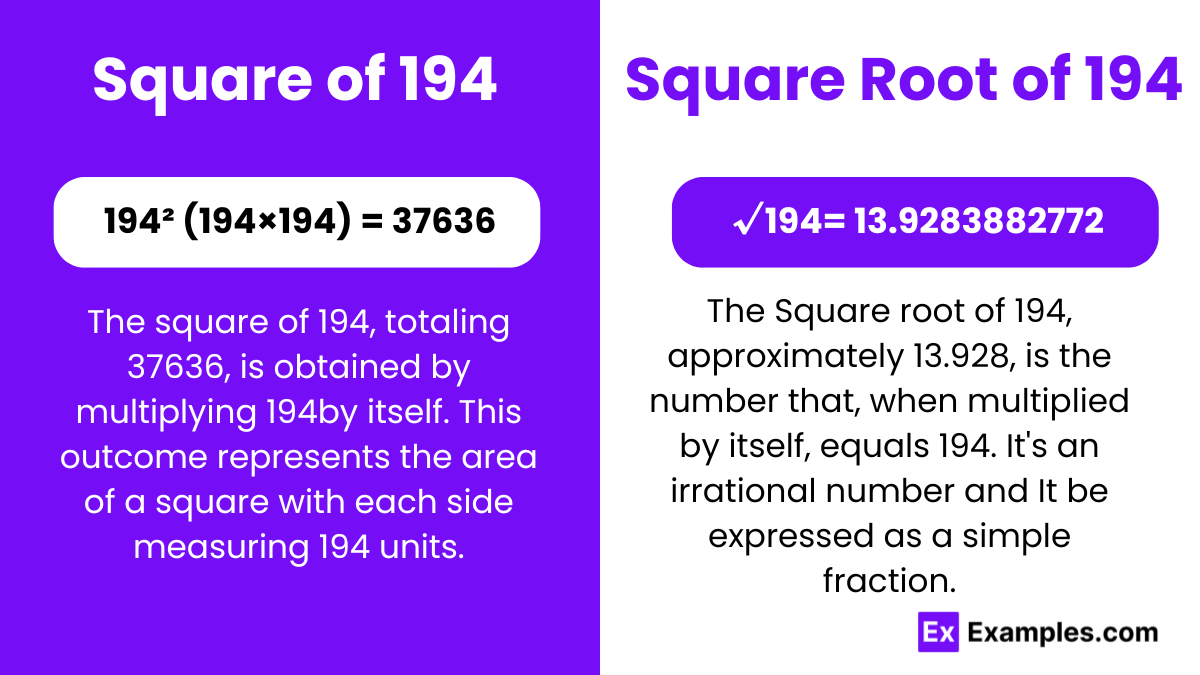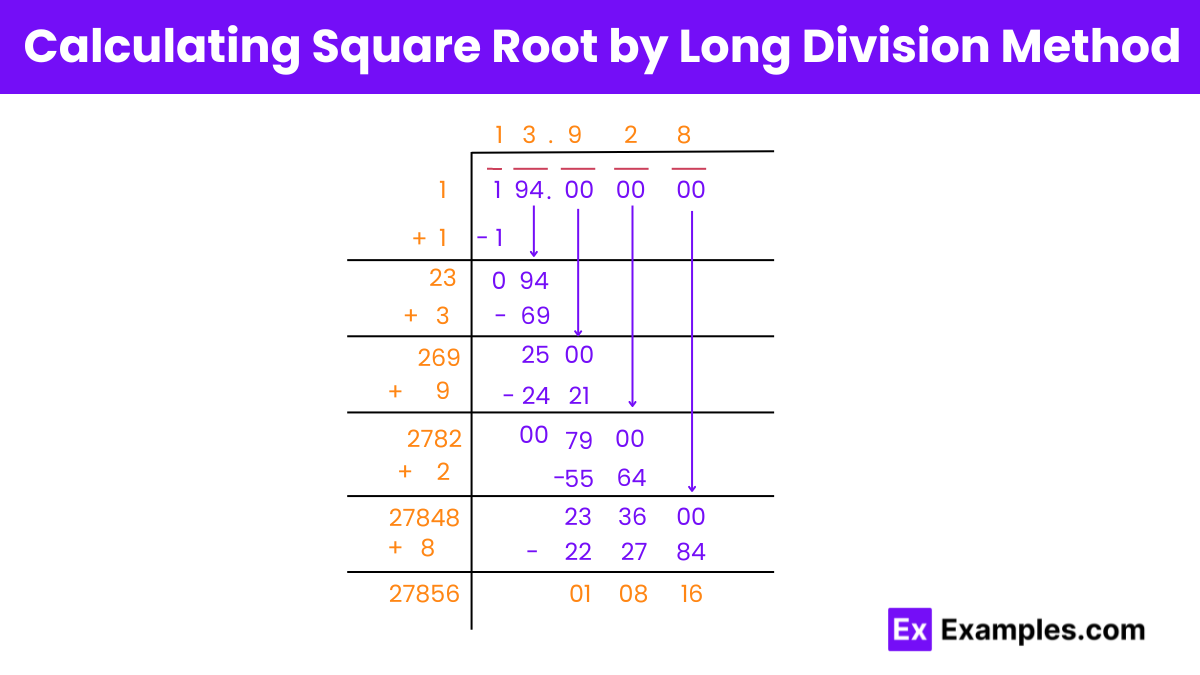What is the square of 194?
37636
37436
36836
38436


The square number of 194 is 37,636. This number represents the result when 194 is multiplied by itself. It’s a large number, indicating the area of a square with sides of length 194 units. It’s divisible by several smaller squares, making it significant in mathematical calculations and geometric contexts.
The square root of 194 is approximately 13.93. It’s the value that, when multiplied by itself, equals 194. This is a fundamental concept in mathematics and geometry. 13.93 is an irrational number and a factor in the context of 194.
Square Root of 194: 13.92
Exponential Form: 194^½ or 194^0.5
Radical Form: √194
Rational numbers are numbers that can be expressed as a fraction of two integers, where the denominator is not zero. They include integers, finite decimals, and repeating decimals.
Irrational numbers are numbers that cannot be expressed as a fraction of two integers. They have non-repeating, non-terminating decimal expansions.
1. Long Division Method:
2. Prime Factorization:
3. Using a Calculator:
4. Estimation Method:
5. Newton’s Method (Heron’s Method):

Start pairing the digits by adding a bar on top of them from the unit’s place in pairs of two. We have two pairs: (1 & 94).
1. First Pair:
2. Second Pair:
3. Add Decimals:
4. Continue Long Division:
Using this method, the square root of 194 is approximately 13.928.
A perfect square is a number that can be expressed as the square of an integer. Since the square root of 194 is not an integer, 194 is not a perfect square.
169 (13^2) and 196 (14^2).
It’s a non-perfect square, useful for practicing square roots.
No, it’s divisible by 2
Yes, as 2 * 97.
Four: 1, 2, 97, and 194.
1 (1+9+4 = 14, 1+4 = 5, 5+0 = 5).
Text prompt
Add Tone
10 Examples of Public speaking
20 Examples of Gas lighting
What is the square of 194?
37636
37436
36836
38436
What is the approximate value of the square root of 194?
13.8
13.9
14.0
14.1
Which number is closest to the square of 194?
37000
37500
37600
38000
If x² = 194, what is the approximate value of x?
13.8
13.9
14.8
14
Which statement is true about the square root of 194?
It is a whole number.
It is a rational number.
It is an irrational number.
It is an integer.
What is the result of 194 squared minus 100?
37536
37636
37436
37836
Which of the following is the closest integer to the square root of 194?
13
14
15
16
What is the difference between 40000 and the square of 194?
23464
23364
23564
23664
If the square root of a number is approximately 13.9, what is the number?
194
196
197
198
Which value represents the closest approximation for the square root of 194 when rounded to one decimal place?
13.8
13.9
0
1
Before you leave, take our quick quiz to enhance your learning!

